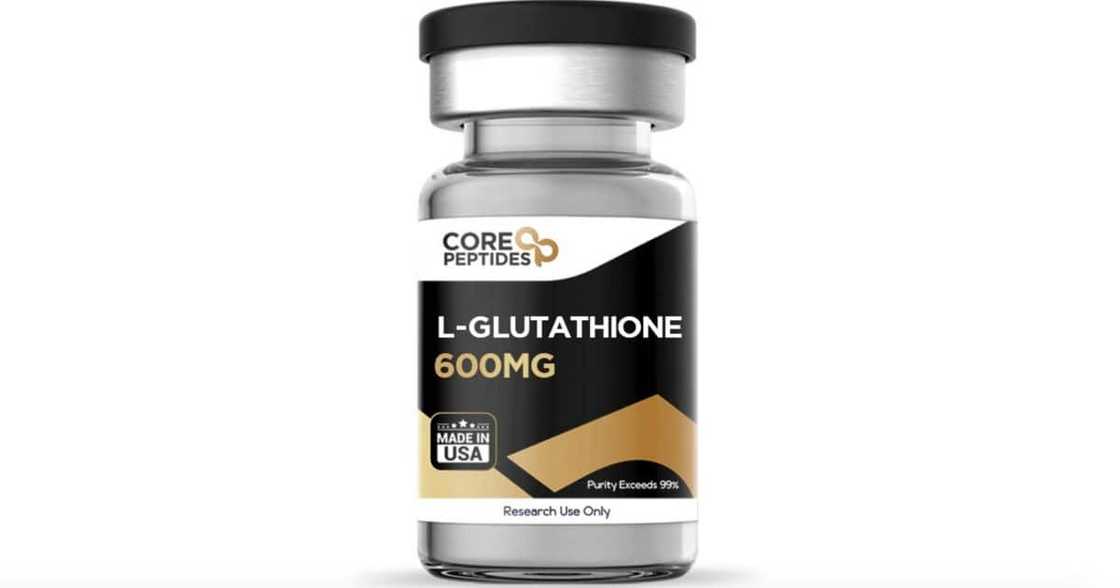L-Glutathione Peptide and Biological Activity Research

Source: UGC
L-Glutathione Peptide and Biological Activity Research
Studies suggest that Glutathione may control many biological activities and be a potentially effective antioxidant. Tissues have much of it, but it decreases over time. Research suggests that Glutathione may have many potential properties, including lowering the risk of neurological diseases, promoting functional cartilage, protecting optic nerves, enhancing immunological function, and invigorating skin cells.
L-Glutathione: What is it?
The three amino acids, cysteine, glutamate, and glycine, comprise the brief peptide known as L-Glutathione. Investigations purport that as a naturally occurring substance, it may mainly serve as an antioxidant and support many CNS activities. Findings imply that Glutathione may be crucial in the brain's free-radical scavenging and the liver's detoxification activities. Plenty of research points to Glutathione deficiency as a possible cause of neurological disorders like Parkinson's and ocular disorders, including cataracts and diabetic retinopathy. It is believed that decreased Glutathione levels are caused by or contribute to the cell aging process. Low Glutathione levels are another symptom of chronic illness.
The peptide seems broken down in the intestines, rendering Glutathione replenishment useless. Even while N-acetyl cysteine (NAC) and other Glutathione precursors get a lot of attention, studies indicate that Glutathione levels naturally decline over time due to a decline in synthesis ability. This decline in production capacity diminishes the efficiency of NAC and other precursors in producing Glutathione.
Glutathione and Oxidation
It has long been speculated that L-Glutathione may be a crucial low-molecular-weight antioxidant produced by cells in the organsim. The sulfur in the cysteine part of GSH may eliminate harmful free radicals such as peroxides, nitrogen dioxide, HOCl, and many more. It has been hypothesized to use a fundamental redox process, shielding DNA, cells, and extracellular matrix components from free radical damage.
Scientists speculate that Glutathione may aid other antioxidants, including vitamins C and E, in their antioxidant roles. It also appears to directly neutralize free radicals. Glutathione is present both intracellularly and in the extracellular matrix. Its concentrations in the liver, brain, and lungs are quite high.
A lack of Glutathione has been linked to several disorders, including diabetes, HIV/AIDS, cancer, and TB, due to the crucial role it is believed to play in the organism. According to the research, Glutathione levels might significantly indicate how serious and how forward an illness is within the animal research model. Researchers may have a more quantitative way to evaluate the timing and effectiveness of different circumstances if Glutathione levels are measured. There is currently no standard process for determining Glutathione levels, even though its involvement in cell aging and illness is speculated. Now, scientists are trying to figure out how to measure this basic peptide, which might provide important information.
L-Glutathione: Biological Activity
Investigations purport that L-Glutathione may be a crucial and essential chemical in synthesizing prostaglandins and leukotrienes (inflammatory mediators). Because of this, it is theorized to be a possible modulator of the inflammatory cascade and specific immunological responses. Not only does it appear to improve citrulline's performance in the NO cycle, but it seems to also be a cofactor in other metabolic activities. Glutathione has been asserted to play a vital role in regulating blood pressure and heart function, and it may be an integral element of cellular metabolism.
Findings imply that the endoplasmic reticulum might rely on Glutathione for correct protein folding. Research suggests that Glutathione may aid protein folding, which is necessary for receptor binding and optimal protein function. When disulfide bonds are formed, they play a crucial role. Scientists speculate that Glutathione may play a significant role in cellular processes that ensure proteins fold correctly. However, it is not the only mechanism cells have for this purpose.
Whether Glutathione functions as a neurotransmitter is still up for discussion. Among its many theorized functions, one that would classify it as a neuromodulator is believed to be its potential to alter the redox states of various molecules and receptors. It has been theorized to activate the purinergic P2X7 receptor and ionotropic receptors on Muller cells. The retina contains Muller cells to keep retinal cells in good shape and working order. Among these functions is the control of neurotransmitter concentrations. Here, we have more data suggesting that Glutathione might regulate neurotransmitters, even though it is not a neurotransmitter.
Researchers interested in further studying the potential of L-Glutathione may find it for sale on the Core Peptides website. Please note that none of the substances mentioned in this article have been approved for human or animal consumption.
References
[i] H. J. Forman, H. Zhang, and A. Rinna, “Glutathione: overview of its protective roles, measurement, and biosynthesis,” Mol. Aspects Med., vol. 30, no. 1–2, pp. 1–12, Apr. 2009, doi: 10.1016/j.mam.2008.08.006.
[ii] G. Teskey et al., “Glutathione as a Marker for Human Disease,” Adv. Clin. Chem., vol. 87, pp. 141–159, 2018, doi: 10.1016/bs.acc.2018.07.004.
[iii] S. Tsunoda et al., “Intact protein folding in the glutathione-depleted endoplasmic reticulum implicates alternative protein thiol reductants,” eLife, vol. 3, p. e03421, Jul. 2014, doi: 10.7554/eLife.03421.
[iv] H. R. Freitas and R. A. de M. Reis, “Glutathione induces GABA release through P2X7R activation on Müller glia,” Neurogenesis, vol. 4, no. 1, p. e1283188, Feb. 2017, doi: 10.1080/23262133.2017.1283188.
[v] J. H. Wu and G. Batist, “Glutathione and glutathione analogues; therapeutic potentials,” Biochim. Biophys. Acta, vol. 1830, no. 5, pp. 3350–3353, May 2013, doi: 10.1016/j.bbagen.2012.11.016.
[vi] T. S. Nagapan, W. N. Lim, D. F. Basri, and A. R. Ghazali, “Oral supplementation of L-glutathione prevents ultraviolet B-induced melanogenesis and oxidative stress in BALB/c mice,” Exp. Anim., vol. 68, no. 4, pp. 541–548, Nov. 2019, doi: 10.1538/expanim.19-0017.
[vii] A.Bansal and M. C. Simon, “Glutathione metabolism in cancer progression and treatment resistance,” J. Cell Biol., vol. 217, no. 7, pp. 2291–2298, Jul. 2018, doi: 10.1083/jcb.201804161.
[viii] N.Traverso et al., “Role of glutathione in cancer progression and chemoresistance,” Oxid. Med. Cell. Longev., vol. 2013, p. 972913, 2013, doi: 10.1155/2013/972913.9.
Source: Briefly News

